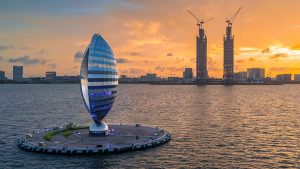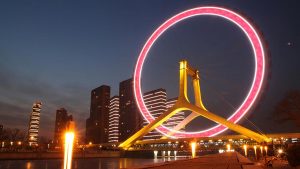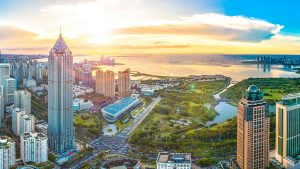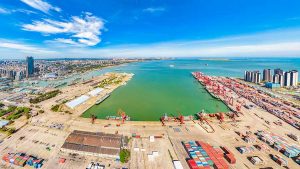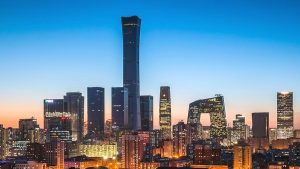We cover the latest economy and trade, legal and tax updates, industry insights, and HR and payroll news that are most relevant to doing business in China. Here are our top China news summaries.
Shanghai Lingang New Area Releases Whitelists for Data Export, Facilitating Cross-Border Data Flows
Shanghai’s Lingang New Area has released general data lists that will facilitate data export for companies in the automotive, biopharma, and mutual fund sectors.
Tianjin Free Trade Zone Releases China’s First Negative List for Cross-Border Data Transfer
The Tianjin Free Trade Zone has released China’s first data Negative List outlining the types of data that must undergo a security review by China’s cybersecurity bureau to be transferred out of China.
China’s New Measures to Support Foreign Investment in Sci-tech Firms
China seeks to attract sci-tech foreign investment by relaxing rules, fostering partnerships, and enhancing the investment climate.
Shenzhen’s Qianhai Cooperation Zone Expands Preferential IIT and CIT Policies
The Shenzhen Municipal Tax Bureau, Shenzhen Municipal Finance Bureau, and State Tax Administration have issued two notices broadening tax incentives for individuals and companies in the Qianhai Cooperation Zone.
Tax Risks of Using Personal Vehicles for Business Purposes and Compliant Solutions
Using personal vehicles for business purposes can create hidden tax risks for both employees and companies. This article explores why these risks arise and offers two compliant solutions.
US-China Relations in the Trump 2.0 Era: A Timeline
Trump has threatened an additional 100% tariff on Chinese goods in retaliation for the expansion of rare earth export controls. This timeline was created on January 21, 2025, and was last updated on October 11, 2025.
How Companies Can Leverage the 30% Added Value Rule in Hainan
Starting December 18, 2025, Hainan’s 30 percent added value rule enables duty-free transfers to mainland China for goods processed in Hainan. This policy creates new options for cost reduction and supply chain optimization.
Beyond Zero Tariffs – What Hainan’s New Customs Zone Means for Industry, Investors, and the Island
Effective December 18, 2025, the new Hainan customs zone introduces a two-line tariff system to boost processing and trade activities. It offers duty-free benefits for imports used within the island and incentives for value-added industries.
China’s Luxury Market Outlook: Stabilization, Strategic Reset, and the New Consumer Landscape
China’s luxury market is entering 2026 in a phase of cautious stabilization, shaped by shifting consumer demographics, evolving tastes, and a more complex macro-policy environment.
CEWC 2025: China Emphasizes Boosting Domestic Consumption, Proactive Fiscal Policy in 2026
China’s 2025 Central Economic Work Conference sets a cautious yet targeted economic agenda for 2026, emphasizing proactive fiscal policy, modest monetary easing, and efforts to boost domestic consumption and strategic investment.
Frequently Asked Questions in VAT Management in China
This China VAT Q&A addresses practical compliance issues, from invoice issuance to input tax credits. These answers help businesses navigate VAT rules confidently.
Annual Compliance Requirements for Foreign NGOs in China
Foreign NGOs in China must follow a strict annual compliance process involving activity plans, work reports, and inspections. Learn the key steps, risks, and strategies to ensure smooth compliance.


